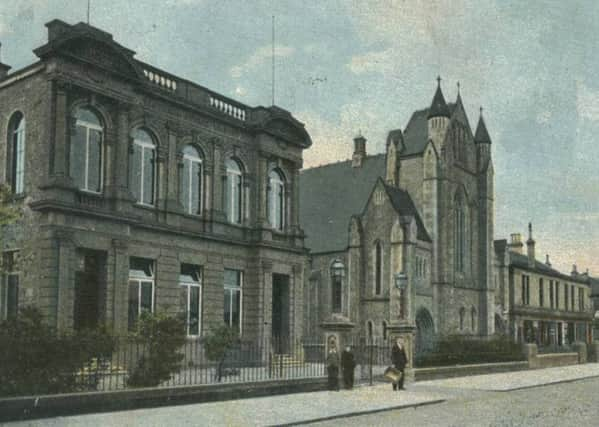Andrew Carnegie’s greatgift to Grangemouth


Back in the Victorian era progressive thinkers recognised the importance of education beyond the elementary offering of the schools and pressed the case on those who ruled the roost to make opportunities for self improvement available to the public.
As a result, in 1887, Parliament reinforced earlier legislation by allowing local authorities to add a penny in the pound to the local rates for the express purpose of building, stocking and maintaining free public libraries.
Advertisement
Hide AdAdvertisement
Hide AdIn Grangemouth the new council which took over from the Dundas family in 1872 decided to adopt the Act as the growing industries demanded a better educated and informed workforce.
Besides it was the 50th anniversary of Queen Victoria’s accession to the throne and a fine new ‘Victoria Public Library’ would be a grand way to celebrate.
Of course libraries were nothing new, and certainly not in Grangemouth.
As early as 1825 there were two institutions in the old town, one in the school in Middle Street and another in Canal Street which was open to subscribers.
Advertisement
Hide AdAdvertisement
Hide AdBy all accounts they were well used but never properly financed and, as expansion brought new houses, workshops, churches and schools, the incoming population needed something much better.
The penny rate on its own was not enough so the search was on for extra funds.
Enter the man whose vast fortune brought about a revolution in library provision in his native Scotland.
Andrew Carnegie, like his fellow Scottish-American Robert Dollar, was a man of his times and the way in which he accumulated his wealth does not sit easily with us today.
Advertisement
Hide AdAdvertisement
Hide AdHowever redemption came as he disbursed his multi-millions in support of education – and libraries in particular.
When he was made aware of Grangemouth’s plans he immediately offered £600 towards the cost of a new building which was increased to £900 as the project developed.
While work progressed, two rooms were set aside in the new Town Hall at Charing Cross to form a temporary library and, in September 1887, Mr and Mrs Carnegie appeared in person to open the premises which immediately proved very popular with 11,000 books loaned out in the first year and 200 people using the reading room each day.
Work began on the new Victoria Public Library across the road to the design of Falkirk’s leading architect, William Black.
Advertisement
Hide AdAdvertisement
Hide AdIn October the following year the memorial stone was laid by the Earl of Zetland on what was a big day for the town with much pomp and ceremony including carriages, marching bands, flags and streamers, many speeches and the usual bun fight especially among the ‘‘high heid yins’’.
Four months later on January 31, 1889, the building was officially opened by Thomas Dawson Brodie of Carron Company. It was the second Carnegie library in the world after his native town of Dunfermline six years earlier.
As the years passed the building was extended twice. In 1939 children’s and reference rooms were added with Andrew Carnegie’s grand-daughter doing the opening honours.
In 1965 there was a further major extension to the rear of the building to meet the ever growing demand.